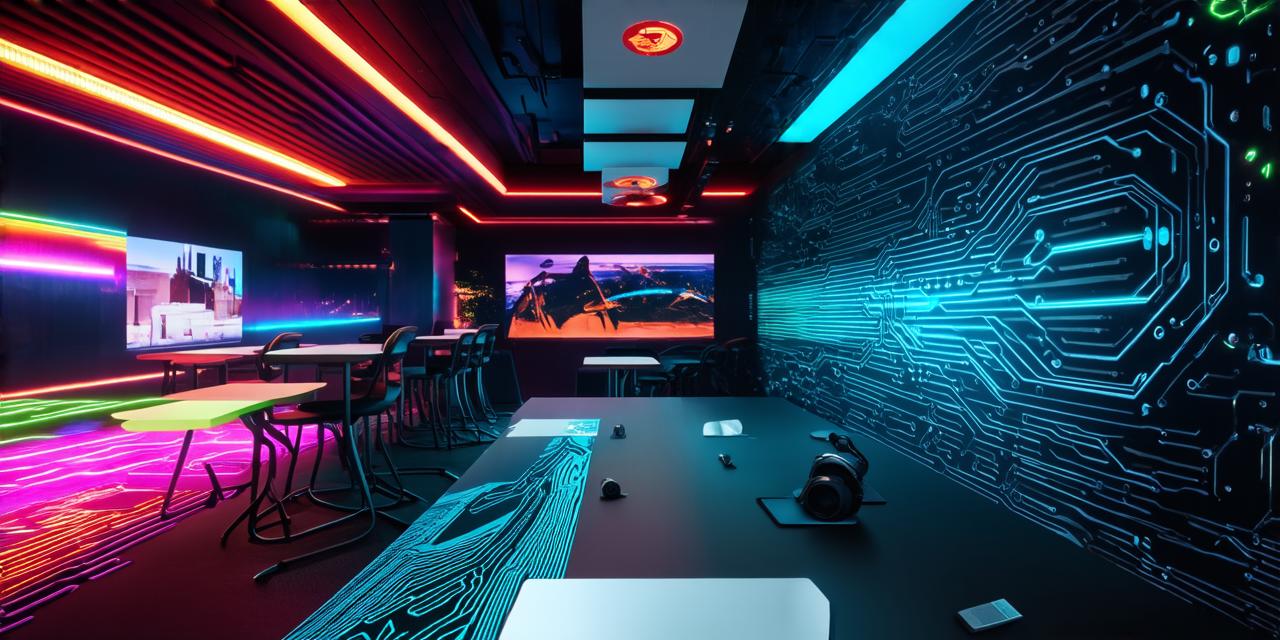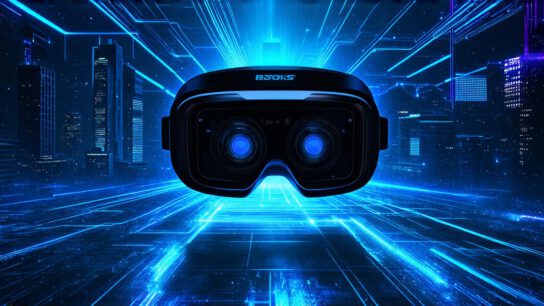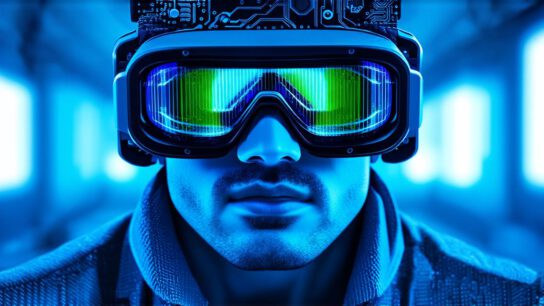As virtual reality (VR) technology continues to evolve, it is becoming increasingly popular in the education sector. With its ability to create immersive and interactive experiences, VR has the potential to revolutionize the way we teach and learn.
Introduction
Virtual reality (VR) is a technology that simulates 3D environments in which users can interact with objects and other people in real-time. With the increasing popularity of VR, there has been a growing interest in using this technology in education to enhance learning experiences.
Improved Engagement and Motivation
One of the main benefits of using VR in education is that it can improve engagement and motivation among students. By creating immersive and interactive environments, VR allows students to experience learning in a more engaging and enjoyable way.
This has been demonstrated in various studies, such as one conducted by the University of Maryland, which found that students who used VR-based simulations to learn about the solar system were more engaged and motivated than those who learned through traditional methods.
Enhanced Visualization and Understanding
Another key benefit of using VR in education is that it allows for enhanced visualization and understanding of complex concepts. By creating 3D models and simulations, VR enables students to experience and interact with these concepts in a way that traditional methods cannot.
For example, medical students can use VR to simulate surgeries and practice their skills, while engineering students can use VR to design and test structures before building them in the real world.
Improved Accessibility and Inclusivity
Virtual reality technology can also improve accessibility and inclusivity in education. By allowing students to experience learning environments from anywhere with an internet connection, VR eliminates geographical barriers that may prevent some students from accessing certain educational resources.
Additionally, VR can be tailored to meet the needs of students with disabilities, providing a more inclusive learning environment.
Improved Collaboration and Communication
Virtual reality technology can also improve collaboration and communication among students, as it allows them to interact with each other in virtual environments. This can lead to more effective teamwork and problem-solving skills, which are critical for success in many fields.
Case Studies: Virtual Field Trips and Cultural Experiences
Virtual reality technology can also be used to provide students with immersive field trips and cultural experiences that may not be available in their local area. For example, the University of California, Los Angeles’s (UCLA) VR lab uses VR to simulate field trips to historical sites such as Stonehenge and the Great Pyramids of Giza.
Another example is the use of VR by the United Nations Children’s Fund (UNICEF) to provide immersive experiences for children in refugee camps. By using VR to simulate safe and engaging environments, UNICEF has been able to provide children with much-needed emotional support and distraction during difficult times.
Expert Opinions on the Future of Virtual Reality in Education
Experts in the field of education and technology have also expressed their views on the future of virtual reality in education. For example, Dr. Richard Gagné, a leading researcher in the field of educational technology, believes that VR has the potential to revolutionize the way we teach and learn.
“Virtual reality is going to have a profound impact on education, and we are already seeing some exciting applications. As the technology continues to improve, I believe we will see even more innovative uses of VR in the classroom.”
Similarly, Dr. Karen Greenberg, a professor of educational technology at the University of Maryland, believes that VR has the potential to transform education by providing students with immersive and interactive experiences that can enhance learning outcomes:
Virtual reality is already being used in some classrooms, but its full potential has not yet been realized. As more research is conducted on the effectiveness of VR in education, I believe we will see even more innovative uses of this technology.
Comparing Virtual Reality to Traditional Methods of Learning
To fully understand the benefits of virtual reality in education, it is important to compare it to traditional methods of learning. While both methods can be effective, VR has several advantages that make it a compelling option for educators and students alike.
Firstly, VR allows for enhanced visualization and understanding of complex concepts, which can lead to improved learning outcomes. Traditional methods such as lectures and textbooks may not provide the same level of immersion and interaction that VR can offer.
Secondly, VR can improve engagement and motivation among students, leading to more effective learning outcomes. While traditional methods may be effective in some cases, they may not provide the same level of excitement and enjoyment as VR-based simulations.
Finally, VR can improve accessibility and inclusivity in education by allowing students to experience learning environments from anywhere with an internet connection, and by providing tailored experiences for students with disabilities. Traditional methods may be limited by geographical barriers and may not be accessible to all students.
FAQs: Common Questions about Virtual Reality in Education
1. Is virtual reality technology expensive?
While VR technology can be expensive, there are also affordable options available for schools and universities. Additionally, many educational institutions have already invested in VR technology, making it more accessible to educators and students alike.
2. Can virtual reality technology replace traditional methods of learning?
While VR technology has several advantages, it cannot replace traditional methods entirely. However, by incorporating VR into their teaching practices, educators can provide students with a more immersive and interactive learning experience.
3. Is virtual reality technology safe for students?
When used responsibly, VR technology is generally safe for students. However, educators should ensure that students are using the technology in a controlled and supervised environment, and that they are aware of any potential risks or dangers associated with VR use.
4. What are some examples of virtual reality technology being used in education?
Virtual reality technology can be used for a variety of purposes in education, including immersive field trips, cultural experiences, collaborative workspaces, and simulations of real-world environments such as historical sites or scientific experiments.
5. How effective is virtual reality technology in improving learning outcomes?
While more research is needed to fully understand the effectiveness of VR in education, early studies have shown that VR can improve engagement, motivation, and understanding of complex concepts, leading to improved learning outcomes.
Conclusion: Virtual Reality Technology in Education
Virtual reality technology has the potential to revolutionize the way we teach and learn, providing students with immersive and interactive experiences that can enhance learning outcomes. By incorporating VR into their teaching practices, educators can provide students with a more engaging and effective learning experience, while also improving accessibility and inclusivity in education. While there are some potential risks and dangers associated with VR use, when used responsibly, VR technology has the potential to transform the field of education for years to come.



